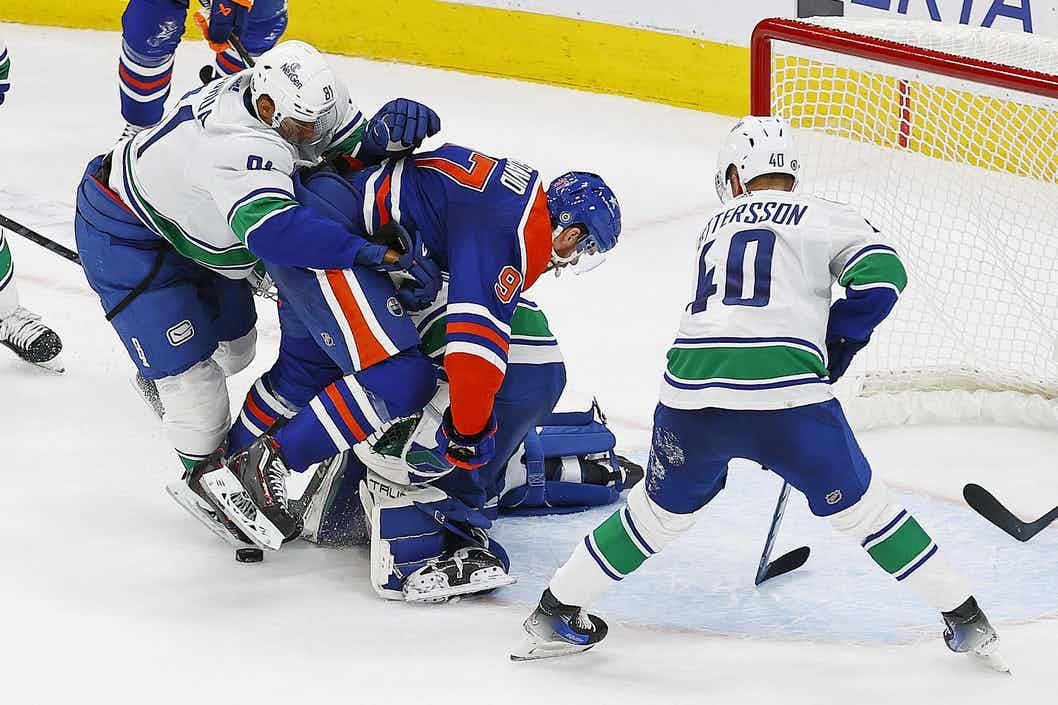Justin Schultz, Pittsburgh Penguins defenceman

Justin Schultz is off to a pretty decent start to his post-Edmonton Oilers career, and his stats line certainly looks impressive. He’s played 15 games in Pittsburgh, putting up seven points and an impressive plus-10 rating.
It’s a performance which warrants closer examination.
One of the first points worth noting here is usage.
It took Schultz a while to get ice-time in Pittsburgh, because he’d been slotted in the No. 6/7 role on the team, at least to begin his Penguins career. An injury to Ben Lovejoy opened the door for him; a further injury to Olli Maatta kept it open. He’s averaging less than 12:00 per game at even-strength, playing almost 2:30 per game on the power play and in all just barely clears the 14:00 minute mark on average.

There’s an Oilers comparison for that kind of role this year:
- Brad Hunt, EDM: 11:37 at evens, 2:31 on the power play, 14:10 overall
- Justin Schultz, PIT: 11:40 at evens, 2:27 on the power play, 14:09 overall
Nor is Schultz just playing minimal minutes; he’s also appeared in an extremely sheltered role. He and regular partner Ian Cole are on the ice for two offensive zone draws for every defensive zone faceoff they see. Only one other defenceman on the team (Trevor Daley) has a zone-start easier than 50 percent; even supposed defensive liability Kris Letang is starting more in his own end of the rink than in the offensive zone.
Schultz is playing the role of power play specialist, and he’s been carefully sheltered and minimally used at even-strength.
He’s also been lucky. The following chart shows key on-ice numbers for the defencemen to play at least an hour at five-on-five in Pittsburgh since Schultz’s first game (data via puckalytics.com):
|
Schultz’s goals for and goals against numbers are brilliant, and it isn’t hard to see why. When he’s on the ice, the Penguins have scored on 14 percent of their shots, nearly double the NHL average. The opposition has scored on less than four percent of its shots, less than half the NHL average. In the two hours that Schultz has been out there, any given Pittsburgh shot has been four times as likely to end up in the back of the net as any given opposition shot.
There’s a word for that. The word is luck.
Certainly the shot metrics suggest that the caution of the Penguins’ coaching staff has been warranted. Schultz has a 53.9 percent Corsi rating, which looks great in isolation but is the worst number of any Pittsburgh defenceman over this stretch, which is in itself a remarkable feat given how carefully he’s been deployed. In the short term, when all the bounces are breaking one way, the shot metrics don’t matter; over the long term they tend to tell truths about players.
That’s not to say Schultz isn’t a useful enough player for the Penguins; it’s worth keeping in mind that he’s joining the team at midseason and has to adapt to new players, new coaches and a new city. At this point, I’d guess the shot metrics underrate his ability. In this kind of careful usage, I’d be very surprised if Schultz wasn’t a successful player for Pittsburgh.
However, there’s nothing there to suggest the Pens should qualify him at his current salary of nearly $4.0 million, and when he becomes a free agent as a result I’d argue that NHL teams should look at him precisely the way that Pittsburgh’s coaching staff has: as a third-pair even-strength defenceman and power play specialist.
Edmonton played him above that role for years, and paid a hefty price for it. There’s no sense repeating the Oilers’ mistake elsewhere.
Recent articles from Jonathan Willis





